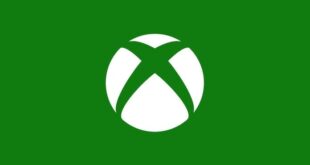In March 2011, a game trailer appeared online with little initial fanfare. Its purpose was to debut Hawken, a release that, back then, only a handful knew anything about.
There was no expectation, and no clue from the name as to genre. The video starts with a disclaimer; one that makes clear that the game is a work in progress and, significantly, is the creation of a small indie development team.
Today ‘small indie’ has become an evocative term, and one that, put before a trailer, might suggest abstract gameplay, faux 8-bit pixel art, or esoteric narratives with poetic ambitions.
It was something of a surprise, then, that as the disclaimer faded away, it revealed a game that looked every bit the triple-A action blockbuster.
The trailer is a thing of beauty for those attracted to dystopian worlds, offering a gliding point of view that sweeps over remarkably detailed and heavily industrialised landscapes. Smoke billows from vents, light and shadow dance over the terrain, and all in all, it hardly looks like typical indie output.
In short, the trailer was a shock, and one that worked very well at jackhammering the game into the conscience of industry and consumers alike.
Hawken is a mech-based first-person shooter, and is the inaugural creation of Adhesive Games; until last year a relative unknown from Los Angeles, which at the time of writing employs a modest 21 staff.
The game is built with the Unreal Development Kit, Epic’s indie-focused development platform, and has thrust its studio into the glare of the mainstream games media spotlight.
“It had impressive visuals and a pretty unique style, and we created it with just a handful of people, so that created some buzz in the industry,” says an understated Chris Lalli, Adhesive co-founder and the game’s lead animator.
“I think the public was happy to see a new mech game as well, since there wasn’t much going on in the genre at the time of that first trailer.”
FREE-TO-SLAY
As a result of the excitement generated by Hawken’s debut, publishers of every size, including some very big names, approached Adhesive looking to sign the game.
However, it was a publisher formed especially for the game named Meteor Entertainment that eventually secured a partnership to release Hawken, and quickly it was decided that the title would adopt both a free-to-play and transmedia model, which will see the game’s universe expanded to a series of digital shorts and more.
Another surprise then, as a game that appears to be very different from typical free-to-play fare adopts a model yet to make a significant impact in core triple-A gaming.
Part of the decision to go free-to play came from the game’s session-based multiplayer structure; a system that demands the largest pool of potential connected players possible to succeed. And as mobile and social have proved, few can resist a base price tag of zero. Free, Adhesive hopes, means more players.
“Having no entry cost to the game greatly increases the size of the player base, so you can easily find matches with good ping and less waiting,” states Lalli, who also cites the free-to-play model’s capacity to enable post-release updates and player engagement; a tough discipline to master in the world of retail games, even with the dawn of downloadable content.
“You can listen to player feedback and frequently make changes that the community wants, in a way that’s just not possible with retail games.
“The game becomes more of a service than just a product, so it can evolve organically. The mech genre is perfect for this model because there’s so much tinkering and customisation available to the players, it allows us to continue creating content and variety for them long after the launch.”
Meteor CEO and former developer, author, graphic novelist and US Army Major Mark Long adds:“Free-to-play lets triple-A developers build a player community and connect with their users in a way they couldn’t before. They come from a time and place where releasing a game in a box was the end of everything.
“Until now maybe it’s been easier to build that engagement with far smaller player communities, where they have broken down the barriers of ownership and made creator and consumer basically the same thing.
"I’ve seen that with small comic releases at many Comic-Cons. Free-to-play triple-A should let the same thing happen with huge global audiences, and I’m excited to see how that turns out.”
PAYING THE PRICE OF FREE
Of course, free-to-play comes hand in hand with the contentious matter of ‘pay-to-win’, where free monetisation models upset the balance of a game by letting players improve their abilities and standing in leaderboards and such by investing real world cash.
Perhaps more than anywhere else, in a multiplayer-focused combat game pay-to-win has the power to utterly derail its host title. Fortunately for prospective Hawken fans, Adhesive and Meteor are well aware of the pitfalls of pay-to-win.
“Pay-to-win is the new dirty word in gaming, and rightfully so,” says Lalli. “We want to avoid that kind of design at all costs. So our model is inspired by free-to-play games that do things correctly, and that have supportive communities.”
Pointing to games like Team Fortress 2 and League of Legends as bastions of well implemented free-to-play, Lalli confirms that in Hawken’s case, upgrades or customisations that effect gameplay can be earned without financial investment on a customer’s behalf.
“We do have items that can only be obtained through real currency, but those are strictly visual or aesthetic flourishes,” he explains. “Things like paint schemes or thruster effects that don’t impact skill level or gameplay in any way. Non-paying players will still have access to a wide variety of visual components as well, so we think everyone will be happy.”
And according to Long, Meteor and Adhesive are also devoted to making sure Hawken’s free-to-play structure does not err into the morally questionable territory that has convinced some to subscribe to that monetisation-targeted adage ‘free is evil’.
“Some of the things you see developers and publishers doing with mobile and social free-to-play really pisses me off,” insists Long, talking of the tactics used to encourage player spending through various mechanics of interaction.
“We want to be the vanguard of hardcore and core gaming, so we don’t want to go anywhere near that kind of thing. We don’t want it to become pay-to-win, and we will never exploit our players.”
AN EASY PC DECISION
Before the decision to make Hawken a free-to-play title, it was in fact on course to be a standard downloadable game, with the likes of Xbox Live considered as potential distribution platforms.
“Our original goal for Hawken was to get it on as many platforms as we could, which was another reason that Epic’s UDK was appealing, since it also supports consoles,” says Lalli.
“That’s still a goal we have, but as time went on we knew we needed to narrow our scope and focus on PC development. The main reasons were resources and the decision to commit to free-to-play.”
According to Lalli the current generation of consoles still imposes too many limitations and restrictions, both visually and with regard to updating and patching content.
“We need extreme flexibility in making changes to the game, integrating community feedback, and adding new content,” says the studio founder. “On the PC we have complete control of that.”
Lalli’s experience seems to support the argument that, from an infrastructure point at least, consoles are not yet ready for the kind of unbridled proliferation of free seen in the mobile and console space.
ACROSS THE BOARD
And what about the none too small matter of Hawken’s transmedia ambitions, which include prose books, graphic novels, a feature film and anime, all of which are reportedly well underway?
Even for a gaming giant, it would be an intimidating range of media through which to weave a story. And, for the time being at least, Adhesive is not a gaming powerhouse.
“In the beginning it was overwhelming,” admits Lalli. “But we’ve managed it through partnerships with other groups that we’ve formed this kind of symbiotic relationship with. For example, Archaia is publishing the Hawken graphic novel, so they’ve done all the heavy lifting on that piece of media.”
For Adhesive, it’s come down to collaboration, getting a range of artists and writers on board and overseeing the production and distribution.
“This way Adhesive can still focus on the game and just offer guidance on the look and feel of the art and the lore involved in the Hawken universe,” says Lalli. “We’ve been really excited about how it’s coming along.”
Adhesive, of course, have had Long at their side, and his experience of transmedia and other art forms to call on. And, as a self-confessed evangelist of transmedia and its power to function as a marketing tool in its own right, Long is more than happy to help out.
“The idea with the transmedia approach is that all those elements – the graphic novel, the feature film – become points of discovery,” states the Meteor boss.
“We made sure that through good transmedia design everything is connected, but works separately, in isolation. And the transmedia model supports free-to-play very well too. They are perfect for each other.”
REAL STEEL
With an indie like Adhesive aiming to hit triple-A quality, succeed delivering free-to-play in a first-person shooter, and fleshing out a far reaching transmedia model, there were of course challenges in taking Hawken from that impressive trailer to finished project. It may be impressive that just 21 core staff have created Hawken, but it’s not always been easy.
“Our biggest challenge from the start was just creating the game we envisioned with such a limited amount of people and resources,” confirms Lalli.
“These limitations affected a lot of our decisions and helped shape Hawken. We focused on multiplayer because it allows the players to create a fun experience through interactions with each other, rather than a resource-heavy single-player campaign that we didn’t have the manpower for.”
Lalli admits sci-fi made for an ideal theme because of its status as a genre that is more forgiving regarding repeating and reusing assets and textures.
“We would kitbash different models together and create totally new props and environments out unrelated things like weapons and robot parts,” he concludes, musing on the affect this has had.
“This has sort of become one of the unique and endearing qualities of Hawken’s aesthetic.”
Just how popular Hawken’s gameplay will be with critics and consumers remains to be seen. And whether a free-to-play model like that seen in Adhesive’s first game can keep a FPS with triple-A ambitions financially afloat is still a mystery.
The following months will also reveal if the free-to-play and transmedia business models as they are today really are perfect bedfellows.
The challenge has only just begun for Adhesive. Now they have to prove their game is worth its salt, make some money and demonstrate the value of free-to-play in the FPS genre.
If the studio’s skill with preparing teaser videos is a measure of its wider abilities, then it should have little to worry about.

 MCV/DEVELOP News, events, research and jobs from the games industry
MCV/DEVELOP News, events, research and jobs from the games industry



